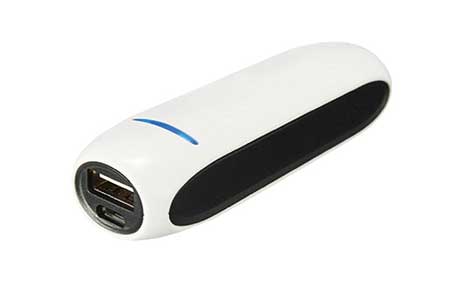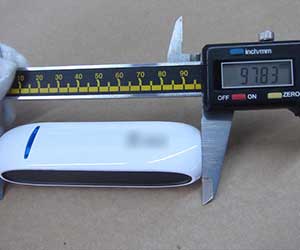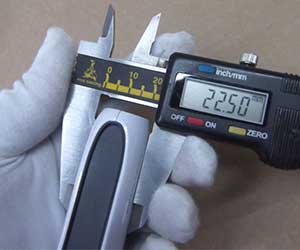Battery backup 2,000 MAH power bank
Specifications:
-Capacity:2600mAh
-Material: Made of ABS material, wear-resistant and durable
-Color: Black+White
-Battery type: Li-po battery
-Micro input: DC5V
-Dural USB output: DC5V/1A
-With a 1pc micro USB cable
-Dimension: 98*28*23M
-LED indication
Features:
-This power bank kit with USB input will keep your smartphone charged when needed.
-Easy to use, fine craft, long service life.
–Lightweight design is effortless to carry, size capacity is available to meet your various needs, ideal for outdoor travel use.
How to buy a power bank?
Charge your mobile device wherever you are.
Capacity
mAh is a rough indication of the power bank’s capacity – the higher the number, the more power it can provide to your device before running out of control. You should find a power bank that can fully charge your smartphone at least twice before requiring a recharge, as this should last one to two days.
A portable battery range from 2000mAh to well over 20,000mAh, and most smartphones have a battery of around 2000mAh. A 10,000mAh power bank should charge a smartphone three times, and a 20,000mAh power bank more than six times.
Weight and size
With increasing mAh capacity, size and weight increase. It might seem handy to have a 20,000mAh battery, but it might not fit in your pocket or bag. It might seem convenient to have a 20,000mAh battery, but it might not fit in your pocket or purse.
If you’re looking to keep your phone charged at a one-day music festival, picnic, or during a night out, look into a pocket-sized model with at least 2000–10,000mAh. Other situations, such as hiking for a few days or without power for a few days, may demand larger models, but these are usually too big for most pockets.
Shape and style
It is relatively easy if you plan to carry the power bank around in a bag. However, weird shapes and bulky designs may be uncomfortable for your pocket. Try to find one that has a similar size and shape to a smartphone.
How do I connect my device to a power bank?
Most power banks will have at least one of these charging inputs:
USB-A: The rectangular-shaped port built into every laptop, hard drive, TV, etc., over the last 15 years.
Micro/mini-USB: The miniature USB variant is typically in smartphones and other portable devices.
USB-C: The new, compact version of USB-A that’s also flippable, so you don’t need to worry about inserting it the right way up. It’s gaining a foothold among smartphone and laptop manufacturers due to its size and versatility.
Wireless: A few models let you charge wirelessly by placing your smartphone on the power bank. Your phone also needs to support wireless charging for this to work.
How do you store your power bank?
The power bank is an everyday part of life for most of us, but for some of us, it is only used once or twice a year on days out or while on vacation. It’s crucial to store your power bank properly when it’s not in use so it’s ready to use when you need it.
Store power banks in a calm, dry environment that is not prone to extremes of temperature. Ensure your power bank charge around 50% before storing it. It is because your device will leak electricity over time. If there is some power in it, it will still leak, but there will be no damage.
Be careful not to overheat your power bank.
A Pocket-size power bank for all mobile phones backup, like any electronic device, will heat up, and extreme temperatures are detrimental to electronic devices, which is why keeping your power bank cool is crucial. Circuits control the flow of electricity in power banks, like phones, laptops, and tablets. An excessive discharge of electricity could cause an electrical fire if these become damaged.
The following methods can help you keep your power bank cool:
1. If it’s not a solar power bank, don’t leave it outside
2. Don’t charge it overnight, but only when you need to
3. Don’t leave it in a poorly ventilated area for a long time, such as a bag or a pocket.
4. Wait to use your power bank again until it is thoroughly cooled down if it starts overheating. Please don’t use it again until it has cooled down in a cool, well-ventilated area. Place your power bank in a cool, well-ventilated area if it starts overheating, and do not use it again until it is thoroughly cooled down.
Make sure your power bank stays dry.
Keep it covered from the rain and out of your pocket during warm days to prevent it from getting wet.
If your power bank gets wet, follow these steps:
Remove the power bank from any external connections safely
Using absorbent paper towels, soak up the water.
Put the power bank into a container full of highly absorbent grain, such as rice, to aid evaporation; place it in a dry, room-temperature environment to allow the moisture to evaporate.
Deionized water is free of minerals that can damage electronics, so it is the best choice for cleaning.
You should not use your power bank if it is still wet, as this can cause serious harm to yourself and any devices you plug into it.
The dangers of overcharging your power bank.
Overcharging power banks can damage the batteries if you leave them too long. It will only catch fire if you charge your device for a little longer than you should. It will only catch fire if you charge your device for a little longer than you should. Consistent overcharging, however, will decrease the battery’s efficiency before long.
Power banks become less effective if they charge for less long regularly.
Keep an eye on the charge periodically to prevent overcharging.
















